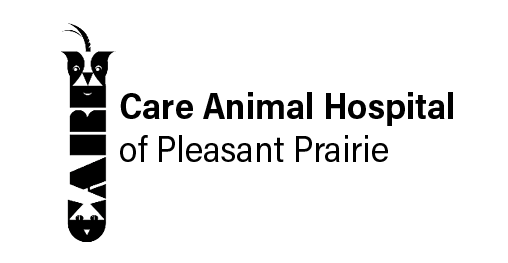Library
-
Finding the cause of a pet's seizures can be difficult. Screening usually starts with a complete history and physical examination, followed by blood and urine tests to look for underlying diseases that can cause seizures. If the cause still cannot be identified, it is possible that they originate within the brain itself and further neurologic testing might be advised.
-
Sneezing and nasal discharge can occur for many different reasons, including infection, allergy, foreign body, and tumors. A thorough history and physical exam is the first step in diagnosing the cause of sneezing/nasal discharge. Initial screening tests are outlined, including CBC, biochemistry profile, urinalysis, and coagulation testing. Specific tests and more advanced diagnostics are also summarized.
-
Unexplained bleeding is worrisome because it suggests a problem with the body’s blood clotting or coagulation system. Disorders of the coagulation system can arise for many reasons, including shortages of coagulation factors (clotting proteins), a shortage of platelets (a type of blood cell), defective platelets, and serious systemic disease affecting the whole body.
-
A pet with vomiting may suffer from an isolated incident, or it could be a sign of more severe problems. If the cause for vomiting is not obvious from history and examination, screening tests may be done to eliminate possible causes and determine a treatment plan. Results can also provide a prognosis for recovery and long-term outlook.
-
Weakness can be caused by many different problems and can involve a variety of body systems. Finding the cause of your pet’s weakness starts with a complete history and physical examination. The most commonly recommended screening tests for weakness include complete blood count, serum biochemistry profile, urinalysis, and in a dog, total thyroxine. Additional tests may be recommended based on the results of these screening tests.
-
Weight loss in cats can be caused by many conditions including inadequate intake to meet energy requirements, poor quality nutrition, and many different medical conditions. Testing for weight loss starts with a thorough history and physical exam. If the cause of weight loss is not clear, then screening tests including a CBC, biochemistry, T4 testing, urinalysis, and fecal tests are performed to further investigate. Based on the results of these tests, more specific diagnostic tests such as imaging, bile acids, or ACTH stimulation may be needed to determine the reason for the weight loss.
-
Tetanus is a medical condition caused by a toxin. This toxin, produced by the bacteria Clostridium tetani, affects the nerves, spinal cord, and brain, leading to hyperexcitability resulting in muscle spasms. Cats are less susceptible to the effects of tetanus toxin than humans and horses. Tetanus is typically diagnosed based on exam findings. Cats with tetanus require intensive nursing care. Most cats develop localized, self-limiting disease, which will respond to appropriate early treatment.
-
Tetracycline is given by mouth and is used off label to treat bacterial infections and inflammatory skin conditions in many animal species. The most common side effects include nausea, vomiting, diarrhea, and lack of appetite. Do not use in pets that are allergic to it or other tetracycline antibiotics, or in pregnant animals, especially in the first half of pregnancy. If a negative reaction occurs, please call your veterinary office.
-
If a dog ingests a potentially poisonous amount of CBD or THC, treatment may involve induction of vomiting followed by administration of activated charcoal, if the pet is not showing signs. Pets with moderate gastrointestinal signs of CBD poisoning are treated with anti-nausea and anti-diarrheal medications; hospitalization is not usually required.
-
Caterwauling is cat vocalization that sounds like a combination of a yowl, a howl, and a whine. This disturbing noise may result from medical problems, physical needs, hormonal stimulations, or emotional insecurities. The response to caterwauling should focus on addressing the cat's circumstances and filling their needs.


